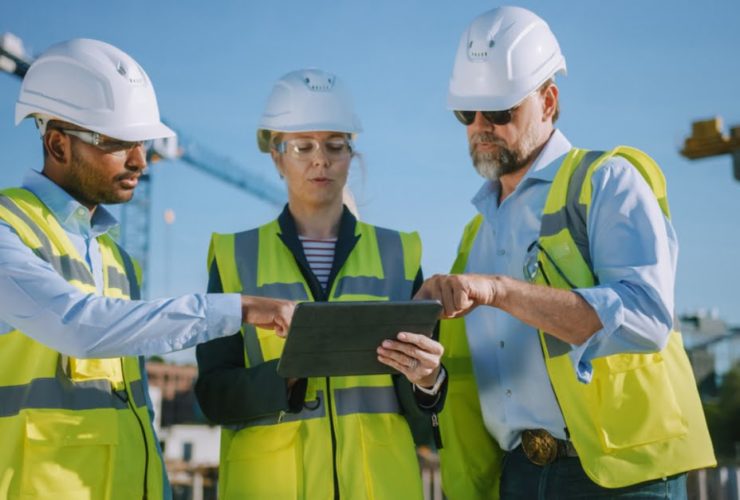Celebrating Women in Construction for International Women’s Day
The construction industry, traditionally dominated by men, is undergoing an important transformation. This evolution is marked by the increasing participation of women, who bring diverse skills, perspectives, and innovation to the field.
Celebrating women in construction is not just about acknowledging their presence in the sector. It’s about recognising their invaluable contributions, their resilience in breaking through barriers, and their potential to drive the industry forward.
Despite the progress, the number of women in the industry remains relatively low, indicating that there’s still a long way to go. The importance of celebrating women in construction lies in fostering inclusivity, encouraging more women to consider careers in this dynamic industry, and highlighting the need for systemic changes to support their growth.
The Historical Perspective
Historically, the construction industry has been a male-dominated field. Women’s roles were confined mainly to administrative tasks or relegated to the background. However, even during these times, women made significant contributions, often overlooked or underappreciated.
Women faced numerous challenges while trying to carve out a place for themselves in this sector. These included societal norms and expectations, lack of mentorship and role models, gender bias, and wage gaps. The physically demanding nature of the work, coupled with the stereotype that such jobs were ‘men’s work’, also deterred many women from considering careers in construction.
Despite these hurdles, pioneering women pushed boundaries and ventured into this challenging terrain. Their courage and determination paved the way for others to follow. Over the last few decades, we have seen a positive shift. The growth of women in construction has been gradual but noticeable.
The Current Situation
A noticeable shift is occurring in the UK construction industry as a record proportion of women are joining the workforce. Around 340,000 women were working in the sector in the second quarter of 2023, marking an increase of 41,000 from the previous year. This influx of female talent into the industry represents a significant step forward towards gender equality and diversity.
The roles that these women hold within the industry are varied and influential. Women are making their mark not just as part of the workforce but also as professionals, executives, and leaders. Whether they are architects, engineers, project managers, or skilled tradespeople, women are bringing a fresh perspective and contributing to the growth and evolution of the industry.
Interestingly, the rise of women in construction is not limited to those entering the workforce directly. A substantial 37% of new entrants into the industry who have come from higher education are women. This trend suggests that the appeal of construction as a viable and rewarding career choice for women is growing, and the industry is benefiting from the skills, knowledge, and innovation these educated professionals bring.
The current landscape of the UK construction industry is increasingly inclusive, with more women than ever before shaping its future. Their presence and contribution are vital to the industry’s resilience, innovation, and success. As we continue to celebrate women in construction, we recognise their achievements, value their unique perspectives, and look forward to their continued impact on the industry.
Where the Industry Can Do Better
Despite the positive strides made in the sector, women still face certain challenges that need to be addressed to further the growth of women in construction.
Changing Societal Attitudes
One of the key issues is the perception of construction as a ‘man’s world’. This can lead to instances of discrimination and bias, which can affect women’s career progression and job satisfaction.
To overcome this, it’s vital that the industry works towards creating a more inclusive culture. This could involve implementing unconscious bias training, promoting positive role models, and ensuring equal opportunities for progression.
Create Flexible Working Options
Another challenge is the lack of flexible working options. Many women juggle multiple roles, including caregiving responsibilities, and the traditional 9-to-5 schedule may not always be feasible.
To address this, companies could consider offering flexible work hours, remote working possibilities, or job-sharing arrangements. This not only helps to attract more women into the industry but also aids in retaining them.
Representation in Leadership
There’s a need for better representation of women in leadership roles within the industry. Having more women in decision-making positions can inspire others and demonstrate that gender is no barrier to success in construction. Companies can foster this by providing leadership training, mentorship programmes, and clear paths to progression for their female employees.
Making Women in Construction Visible
Improving the visibility of women in construction can help to change perceptions and encourage more women to join the industry. Showcasing the achievements and stories of women in construction through various platforms can inspire others and highlight the diverse opportunities available in the field.
While celebrating the growth of women in construction, it’s essential to recognise the areas that need improvement. By addressing these challenges, the industry can ensure that it continues to become an increasingly attractive, inclusive, and fair place for women to work.
We Are Dedicated to Making a Difference
At ITS, we firmly believe that all efforts should be made to encourage people to join the construction industry, irrespective of gender. We are proud to be at the forefront of inclusive and respectful employment, emboldening women to enter the sector and start to build a career.
You can find out more about how we support women in construction here, or get in touch for a more detailed conversation.






